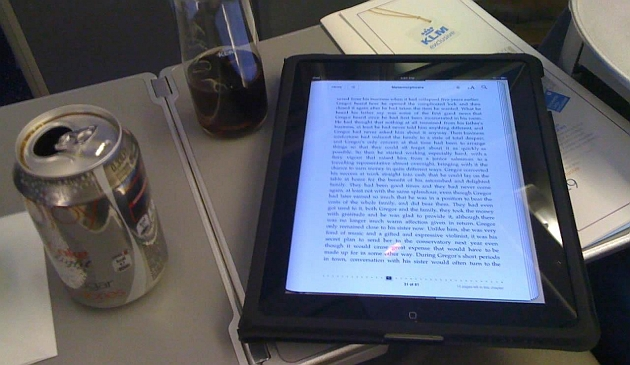You Can Now Use Your Electronics In A Plane During Takeoff and Landing in USA
In times past we were all told to “please turn off all your electronics as it can interfere with the plane's navigational systems” during take-off and landing procedures. Some of us felt we knew that this was all a nonsense, but we had to do it anyway otherwise we'd be in breach of an airline authority's rules. In the case of the USA, that's the FAA and you don't want to mess with them; they're real serious folks.
Well now the FAA has changed their mind on the issue (finally!) and electronics used for what is termed as “gate to gate” travel i.e. on a plane, are permitted during take-off and landing. Countries in Europe, as well as the USA and Canada all now permit the use of that iPad, Android phone or Kindle reading device. I guess it wasn't interfering with the navigational equipment after all.
FAA Guidelines and Rules
The FAA and other regulatory agencies set guidelines rather than rules, in some cases, and this is one where they are letting individual airlines decide how they want to play this. Thankfully for mobile device users who fly a lot, airlines have heard the siren call from their passengers are mostly no longer asking them to turn off their device right in the middle of that chess game against their friend back home.
Big or Small. The Rules Are Not The Same
A distinction is made between a smaller portable device and a larger electronic device with regards to take-off and landings. This no doubt is because the FAA (and the airline carriers) do not want large objects flying around the pressurized cabin should someone lose their grip on their device at a vital moment when the plane tilts upwards (or downwards).
To this end, portable electronic devices such as smart phones, Kindles, iPads and hand-held gaming devices (think: Nintendo) are all allowed. A larger device such as a laptop or DVD player is not allowed for use during take-off and landing. So in this case, bigger is not necessarily better.
Outside of the take-off and landing procedures it is perfectly all right to use a laptop, DVD player or other larger device during the flight. Just not when the plane is either getting airborne or coming back down to the Earth.
Securing Your Mobile Device
To be permitted to keep the device on and also not stowed away, a smaller mobile device must be held in the hand to be considered safe. A Kindle that is conveniently propped up against the seat back in front won't do because it could easily slip, slide and crash. We cannot have that. So during take-offs and landing procedures small mobile devices need to be either tucked away in a convenient pocket or held in your hand.
Don't Forget Airplane Mode
It is still a requirement to switch your mobile device into an airplane mode. This means disabling any cellular signals like 3G, 4G LTE, Bluetooth, NFC, Wi-Fi Direct and Wi-Fi. This means that whilst it is okay to play a game of Angry Birds during take-off, you're not supposed to be connected to a cell tower in order to send a text message to your friend telling them that you're taking off now... or tweeting it or posting it quickly on Facebook. You know who you are!
There are some flights and some seating classes that do now offer Wi-Fi network connectivity for internet access. In this case, Wi-Fi is permitted but not during take-off or landing procedures.
In the US, the FCC is giving some thought to whether to allow the use of cellphones above 10,000 feet (if you could even get reception), but they are not considering lifting restrictions for take-offs and landings. Taking no chances on that basically.
Inconsistent Mobile Device Use
When you can pull out your Droid phone or access your iPad will depend not only on the carrier that you're flying with but also where you are flying from and going to. If flying from Malaysia to London, you may not be allowed to use your devices during take-off or during the flight when in Malaysian airspace. However, when out of their airspace, the rules may change. Similarly, the rules can again change when reaching European airspace. It is just best to listen to what the airline staff tell you is allowed and follow their lead.
Also, be prepared to stow your device away should the plane be expected to hit some heavy turbulence ahead which could bounce the plane around. No one wants a device made of metal and glass flying around inside the main cabin.

